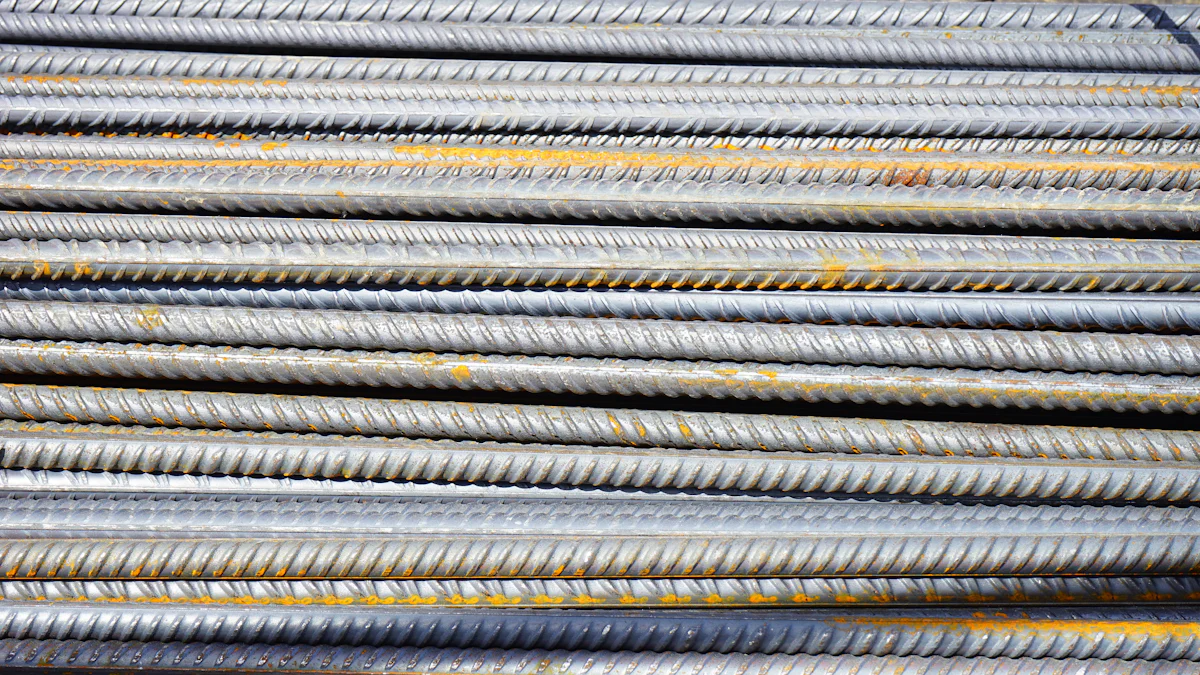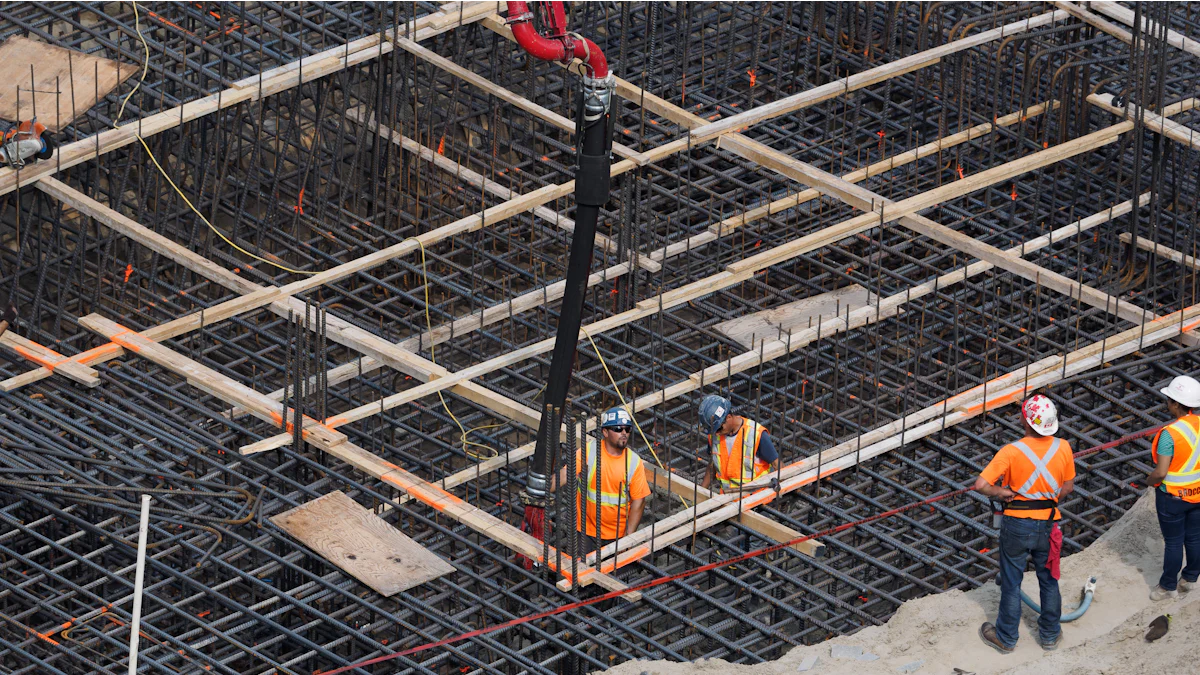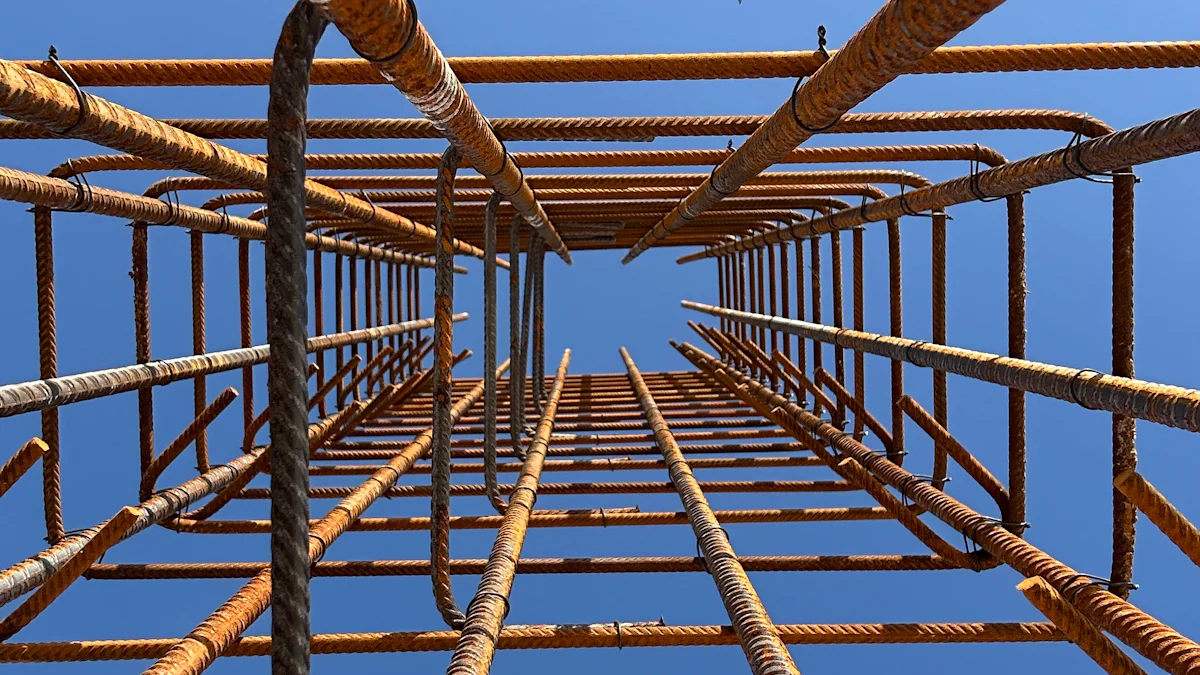
When I choose a stainless steel hexagonal bar for a project, I always think about how its properties will match my needs. These bars are popular in industrial applications for good reasons:
- Corrosion resistance
- Excellent strength-to-weight ratio
- Easy production
- Outstanding aesthetic value
Their toughness makes them perfect for projects involving harsh environments, like exposure to acidic chemicals or salt water. This alignment of properties boosts efficiency and saves costs. If you’re looking for reliable options, check out https://www.yunlanfastener.com/products for high-quality industrial stainlessSteel Hexagonal bars.
Key Takeaways
- Know what your project needs. This helps pick the right bar.
- Think about where the bar will be used. Strong and rust-free bars work best in tough places.
- Buy good-quality materials. They last longer, need less fixing, and save money.
Determine Your Project Requirements
When I start a project, I always ask myself, “What exactly do I need this stainless steel hexagonal bar to do?” Understanding your project’s requirements is the first step to making the right choice. Let’s break it down.
Application-Specific Needs
Different industries use stainless steel hexagonal bars for various purposes. Here’s a quick look at some common applications and their key requirements:
| Application Area | Common Uses | Key Requirements |
|---|---|---|
| Construction | Shafts, fasteners, fittings | Strength, corrosion resistance |
| Manufacturing | Precision machinery components | Strength, temperature resistance |
| Automotive | Automotive parts | Corrosion resistance, strength |
| Aerospace | Aerospace components | Strength, weight considerations |
| Marine | Boat and ship components | Saltwater corrosion resistance |
| Food and Beverage | Equipment in food processing | Corrosion resistance, hygiene standards |
| Oil & Gas | Components in oil extraction | Corrosion resistance, durability |
If your project involves marine environments, for example, you’ll need a bar that resists saltwater corrosion. For food processing, hygiene and corrosion resistance are top priorities. Knowing the application helps narrow down your options.
Strength and Durability Considerations
Strength and durability are non-negotiable for most projects. I always check the material’s properties to ensure it can handle the job. Here are some key factors to consider:
- Tensile Strength: How much stress the bar can handle before breaking.
- Yield Strength: The point where the bar starts to deform permanently.
- Hardness: Its ability to resist scratches or dents.
- Toughness: How much energy it can absorb before fracturing.
For example, 304 stainless steel offers excellent corrosion resistance and versatility, while 316 is perfect for harsh chemical or marine environments. If you need something tougher, 2205 duplex steel might be the way to go.
Environmental Factors and Corrosion Resistance
The environment plays a huge role in material selection. I always think about where the bar will be used. Will it face moisture, chemicals, or extreme temperatures? For outdoor or marine projects, corrosion resistance is critical. Grades like 316 stainless steel excel in these conditions. On the other hand, if the bar will be exposed to high heat, you might need a grade with better temperature resistance, like 410 stainless steel.
By considering these factors, you can ensure your Industrial stainlessSteel Hexagonal bar performs well and lasts longer.
Select the Right Stainless Steel Grade

Choosing the right stainless steel grade can feel overwhelming, but it doesn’t have to be. I always start by understanding the differences between common grades like 304 and 316. Let me break it down for you.
Common Grades (304, 316, etc.)
304 and 316 stainless steel are two of the most popular grades. Each has unique strengths. For example, 304 is a great all-rounder. It’s perfect for kitchen equipment and industrial uses where corrosion resistance is important but not extreme. On the other hand, 316 is the go-to choice for tougher environments. It handles marine and pharmaceutical applications like a pro because of its superior corrosion resistance.
Here’s a quick comparison:
| Property | 304 Stainless Steel | 316 Stainless Steel |
|---|---|---|
| Tensile Strength | Moderate | High |
| Hardness | Moderate | High |
| Modulus of Elasticity | High | Lower |
| Physical Properties | Excellent | Superior |
316’s edge comes from molybdenum, which boosts its resistance to harsh conditions. If you’re working in a corrosive environment, 316 is worth the investment.
Grade Selection Based on Application
I always match the grade to the project’s needs. For example, if I’m working on food processing equipment, 304 is a solid choice. It’s hygienic and corrosion-resistant. But for marine projects, I wouldn’t think twice about using 316. Its ability to resist saltwater corrosion is unmatched.
For heavy-duty industrial applications, I might even consider duplex grades like 2205. They offer higher strength and better corrosion resistance than standard grades. The key is to think about the environment and the stress the bar will face.
Balancing Cost and Performance
Cost is always a factor. I’ve learned that higher-grade stainless steels like 316 cost more upfront. But they often save money in the long run. Why? They require less maintenance and last longer, especially in harsh environments.
Lower grades like 304 are more affordable and work well for less demanding projects. However, if you skimp on quality for a corrosive environment, you might end up spending more on repairs or replacements. It’s all about finding the right balance for your project.
When I choose an Industrial stainlessSteel Hexagonal bar, I weigh the initial cost against the performance and durability it offers. This approach ensures I get the best value for my money.
Evaluate Size and Dimensions
When I choose a stainless steel hexagonal bar, I always pay close attention to its size and dimensions. These factors can make or break a project, especially when precision and compatibility are critical.
Standard Sizes and Compatibility
Stainless steel hexagonal bars come in a variety of standard sizes, which makes it easier to find one that fits your project. Here’s a quick look at the size range for 304 stainless steel bars:
| Hexagon Bar Diameter | Size Range |
|---|---|
| 304 Stainless Steel | 18mm – 57mm (11/16″ to 2-3/4″) |
These sizes work well for many applications. I’ve used them in weight-bearing scenarios and for fabricating structural beam elements like I-beams and H-beams. They’re also great for machining tasks, such as producing nuts and fasteners quickly. If your project involves these uses, you’ll likely find a compatible size without much trouble.
Thickness, Length, and Tolerances
I always double-check the thickness, length, and tolerances of the bar before making a purchase. Thickness affects the bar’s strength, while length determines how much material you’ll have to work with. Tolerances, on the other hand, ensure the bar meets precise specifications. For example, if I’m working on a project that requires tight-fitting components, I’ll choose a bar with minimal tolerance variation. This attention to detail helps avoid costly adjustments later.
Weight and Structural Implications
The weight of a stainless steel hexagonal bar plays a huge role in its performance. The hexagonal shape provides excellent strength and precision, which is why I often use these bars in structural applications. Their design makes them weight-efficient, so they can handle heavy loads without adding unnecessary bulk. This is especially important in large-scale engineering projects, where both weight and load-bearing capacity are critical. I’ve found that their toughness and corrosion resistance make them indispensable in industrial applications.
By carefully evaluating size and dimensions, I can ensure the bar I choose will meet my project’s needs and perform reliably.
Choose the Appropriate Finish
Polished vs. Mill Finish
When I pick a finish for a stainless steel hexagonal bar, I always think about how it’ll look and perform. Polished and mill finishes are the two main options, and they’re quite different.
- Polished stainless steel has a smooth, shiny surface. The process involves grinding, buffing, and polishing with abrasives. This removes imperfections and gives it a reflective, mirror-like quality.
- Mill finish, on the other hand, has a matte appearance. It’s the raw finish straight from the manufacturing process, without any extra polishing.
Here’s a quick comparison:
| Finish Type | Appearance | Ideal Applications |
|---|---|---|
| Mill Finish | Matte finish | Applications not requiring bright finishes |
| Polished Finish | Mirror-like, highly reflective | Applications needing aesthetic appeal |
If I’m working on a decorative project, I’ll go for polished. For industrial uses where looks don’t matter, mill finish works just fine.
Aesthetic and Functional Considerations
The finish you choose isn’t just about looks. It also affects how the bar performs. A polished finish enhances corrosion resistance and makes cleaning easier. That’s why I prefer it for projects where hygiene or maintenance is key, like in food processing. Mill finish, while less shiny, works well for structural applications where durability matters more than appearance.
Maintenance and Longevity
I’ve learned that polished finishes are easier to maintain. Their smooth surface resists dirt and grime, so cleaning takes less effort. Mill finishes, while tougher, can collect debris over time. If I want a bar that stays looking great with minimal upkeep, polished is the way to go. For heavy-duty projects, though, mill finish holds up better to wear and tear.
Assess Supplier Reliability
When I choose a supplier for stainless steel hexagonal bars, I always make sure they’re reliable. A good supplier ensures I get high-quality materials on time, which keeps my projects running smoothly. Here’s how I evaluate them.
Certifications and Quality Standards
Certifications tell me a lot about a supplier’s commitment to quality. I always look for these key certifications:
- ISO 9001 certification: This shows the supplier has a strong quality management system. It means they focus on continuous improvement and operational efficiency.
- Other industry-specific certifications: These prove the supplier takes quality seriously.
Suppliers with these certifications usually invest in quality assurance, staff training, and process improvement. That gives me confidence in their products.
Customer Reviews and Feedback
I always check customer reviews before choosing a supplier. They give me a clear picture of what to expect. Here’s what I look for:
- Positive reviews that mention quality products and on-time delivery.
- Negative reviews that highlight issues like poor customer support or product defects.
Reviews often reflect how well a supplier sticks to quality standards. If most customers are happy, I know I can trust them.
Pricing and Delivery Options
Pricing and delivery options can make or break a deal for me. I compare suppliers to see who offers the best value. Here’s a quick look at what some suppliers provide:
| Supplier | Grades Offered | Delivery Options |
|---|---|---|
| Metric Metal | Customized lengths and sizes | Not specified |
| Penn Stainless | 303, 304/L, 316/L, 410, 416, 440C | Not specified |
| Texas Alloys | 303, 304/304L, 316/316L | Weekly scheduled and off-schedule delivery in about one week |
I prefer suppliers like Texas Alloys, who offer flexible delivery schedules. That way, I can plan my projects better.
By focusing on certifications, reviews, and delivery options, I can find a supplier I can count on. It saves me time and ensures my projects succeed.
Industrial stainlessSteel Hexagonal Applications

When I think about stainless steel hexagonal bars, their versatility always amazes me. They’re used in so many industries because of their strength, durability, and resistance to corrosion. Let me share some of the most common applications I’ve come across.
Torque-Resistant Load-Bearing Uses
These bars are perfect for applications that need to handle torque and heavy loads. I’ve seen them used in:
- Fasteners and Bolts: They’re great for making nuts, bolts, and screws that need a secure grip and high torque resistance.
- Machinery and Automotive Parts: Essential for components that face constant stress and vibration, like engine mounts and gears.
- Precision Engineering and Tools: Ideal for tools that require high accuracy and durability.
- Furniture and Architectural Applications: They combine strength and aesthetics, making them perfect for structural supports.
- Medical Equipment: Their non-reactive properties make them safe for surgical tools and medical devices.
These bars are also widely used in the oil and gas industry for valves and piping systems. Their ability to withstand extreme conditions makes them indispensable.
Common Applications in Engineering and Construction
In engineering and construction, stainless steel hexagonal bars are everywhere. I’ve used them for:
- Machinery Parts: Shafts, pins, and gears.
- Fasteners: Bolts, nuts, screws, and washers.
- Structural Components: Hex nuts, plugs, and valves.
Their strength and precision make them a go-to choice for these projects. Whether it’s a small machine part or a large structural element, these bars deliver reliable performance.
Marine and Corrosive Environment Suitability
If your project involves saltwater or corrosive environments, these bars are a lifesaver. I’ve seen them used in:
- Marine Equipment: Propeller shafts, rudders, and deck fittings.
- Offshore Structures: Boats, ships, and oil rigs.
Their resistance to saltwater corrosion ensures they last longer, even in harsh conditions. For example, 304L stainless steel hex bars are especially good for welding in corrosive environments. They’re tough, durable, and perfect for marine applications.
Industrial stainlessSteel Hexagonal bars truly shine in these demanding environments. Their ability to handle stress, resist corrosion, and maintain their integrity makes them a top choice for so many industries.
When I choose a stainless steel hexagonal bar, I always focus on aligning its properties with my project’s needs. This approach saves time, money, and effort in the long run. Here’s a quick recap of what I’ve learned:
- Define the purpose of your project to guide the selection of size, shape, and material grade.
- Assess the environment to determine the required strength and corrosion resistance.
- Check the tensile strength, chemical composition, and surface finish to ensure durability and functionality.
I’ve also found that investing in high-quality materials pays off. Stainless steel bars last longer, need less maintenance, and reduce replacement costs. Whether I’m working on a marine project or building machinery, careful selection always leads to better results. By considering these factors, I can confidently choose a bar that delivers both performance and value.
FAQ
What is the difference between 304 and 316 stainless steel hexagonal bars?
304 is versatile and affordable. 316 offers better corrosion resistance, especially in marine or chemical environments. I choose based on the project’s exposure to harsh conditions.
How do I calculate the weight of a stainless steel hexagonal bar?
I use this formula:
Weight = (Width Across Flats² × Length × Density) ÷ 1.155
It’s simple and accurate for most projects.
Can I use stainless steel hexagonal bars for outdoor projects?
Absolutely! These bars resist rust and weather damage. I recommend 316 for outdoor or marine environments due to its superior corrosion resistance.
Post time: Jan-30-2025
